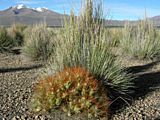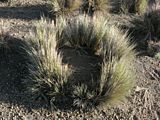Clonal growth and form
Clonal growth is reproduction by structures other than seeds (such as runners, bulbils or rhizomes). A tree adds continuously modules to its branches and so extends vertically, a clonal plant adds modules at the base and extends horizontally. It has been said that a clonal herb is just a tree lying on the side, but the essential difference is of course that the branches of a clonal herb are ramets and capable of an independent existence. Clonal growth is evolutionarily ancient and widespread among plant taxa (more than two third of Central European plant species) and particularly frequent among arctic-alpine plants.
There are a great number of methods by which plants reproduce vegetatively. These includes stolons and runners (above-ground creeping stems), rhizomes (below-ground creeping stems), tubers (thickened rhizomes, mostly storage organs with axillary buds), bulbs (large underground buds with modified thickened leaves (Lilium spp.), or root derived organs of clonal growth (i.e. plants which produce "suckers" or stems from root buds).
A particular form of clonal reproduction is "pseudo-vivipary" in grasses where vegetative tillers associated with adventitious roots are produced in the inflorescence instead of flowers, or the production of vegetative bulbils, which are dispersed in a similar way to normal seeds in the lower part of the inflorescence of Polygonum viviparum.



